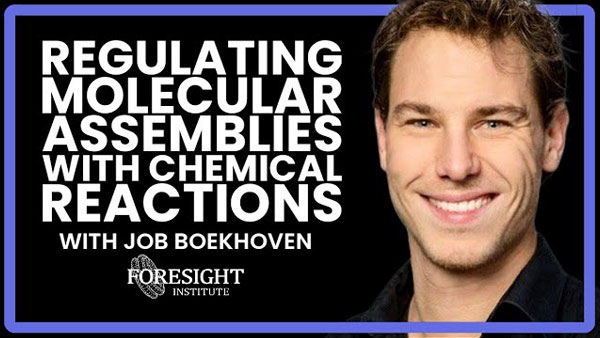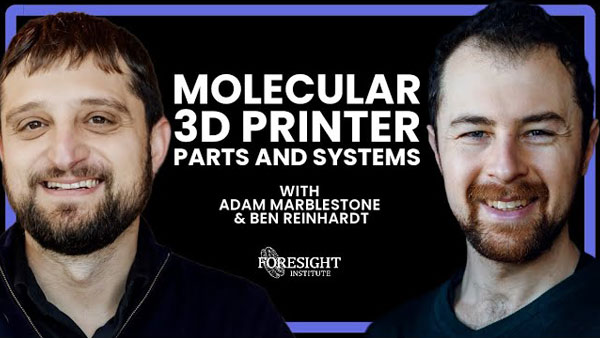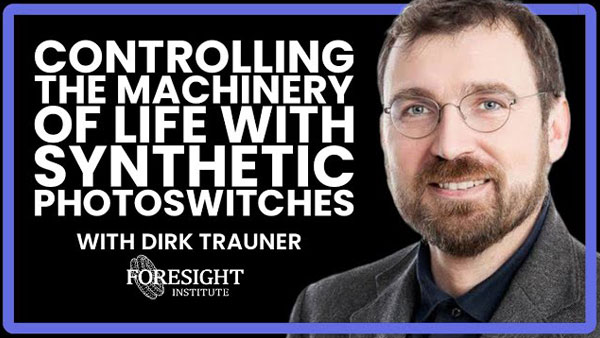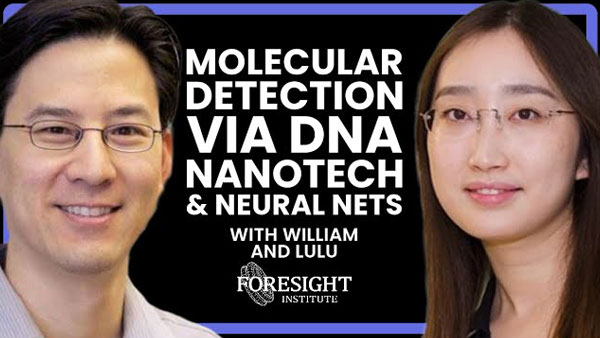Summary Yunyan Qiu and Liang Feng describe the mechanism and possible uses of nanoscale molecular pumps. These pumps are constructed to attract and concentrate rotaxanes. Reduction and oxidation (redox) reactions drive the pumps, changing the polarity of the rotaxanes such that they can be driven across the pump cassette and onto a strand. Some potential… Continue reading Liang Feng, Yunyan Qiu | Artificial Molecular Pumps from Solution to Surfaces
Summary Adam Marblestone Bio and Summary I am working to roadmap and launch science and technology moonshot projects that call for novel organizational and funding models. I am a Schmidt Futures Innovation Fellow and affiliated with the Federation of American Scientists (FAS). Previously, I was a research scientist at Google DeepMind studying connections between AI… Continue reading Adam Marblestone & Ben Reinhardt | FRO & PARPA: Innovating in Scientific Innovation
Presenters Ayusman Sen, Pennsylvania State University Ayusman Sen is a professor of chemistry at Pennsylvania State University. His specialties are nanomotors, catalysis, and new materials. He received a $25,000 award in 1984 from the Alfred P. Sloan Foundation. He has explained what he calls his own “irrational interest” in science with a quote from… Read… Continue reading Ayusman Sen, Pen. State University | Design and Applications of Self-Powered Chemical Nanobots
Presenters Job Boekhoven, Tech. Universität München Job Boekhoven holds an undergraduate degree in chemistry from the University of Groningen, where he majored in organic chemistry, and a PhD degree (2012) in chemistry from Delft University of Technology, both in the Netherlands. Before his appointment at TUM, he was a Rubicon postdoctoral fellow at Northwestern University… Continue reading Job Boekhoven, Tech. Universität München | Regulating Molecular Assemblies with Chemical Reactions
Summary Anne-Sophie is using atomic force microscopy principles to develop a force spectrometer. This spectrometer can measure binding forces at the atomic scale by pulling molecules and reading extremely small force changes as they change configuration or break from the spectrometer tip. It has been used to measure ring/axle assemblies, rotaxanes, molecular rotors, and oligoamide… Continue reading Probing Synthetic Molecular Machines with AFM | Anne-Sophie Duwez, University of Liege
Presenters Adam Marblestone I am working to roadmap and launch science and technology moonshot projects that call for novel organizational and funding models. I am a Schmidt Futures Innovation Fellow and affiliated with the Federation of American Scientists (FAS). Previously, I was a research scientist at Google DeepMind studying connections between AI and neuroscience, Chief… Continue reading Molecular 3D printer Parts and Systems Brainstorm | Adam Marblestone & Benjamin Reinhardt
Summary When attempting to manipulate cellular function, it’s much easier to use the established regulatory pathways rather than building your own. Inserting photoswitches at key points in those pathways let us control cell function with light. The best location for such switches is on the membrane of the cell – easy to measure, open to… Continue reading Controlling the Machinery of Life with Synthetic Photoswitches | Dirk Trauner, NYU
Summary Lee Cronin, a professor at the University of Glasgow, explains the Chemputer – a universally programmable device for synthesizing any molecule. Development is ongoing and proof of concept has been achieved for several molecules. He estimates that with the right components it is capable of performing 95% of all organic chemical synthesis. Presenters Lee… Continue reading The First Programmable Turing Complete Chemical Computer | Lee Cronin, University of Glasgow
Summary Linda Sapochak shares insights on the National Science Foundation’s Division of Materials Research – what has been done, what projects are ongoing, and opportunities for the future. The new director Dr. Panchanathan has bold plans for the future of DMR and several key programs will be instrumental in carrying them out – the Materials… Continue reading NSF Division of Materials Research: Where Materials Begin and Society Benefits | Linda Sapochak, NSF
Presenters William Shih, Harvard University William is overseeing an effort to apply Synthetic Biology approaches to the development of self-assembling DNA nanostructures and devices for use in biomedical applications. To achieve structures of even greater complexity, his laboratory is pioneering methods for hierarchical assembly of these particles into three-dimensional networks with site-specific control over chemical… Continue reading Molecular Detection via DNA Nanotech & Neural Nets | William Shih, Harvard & Lulu Qian, Caltech











